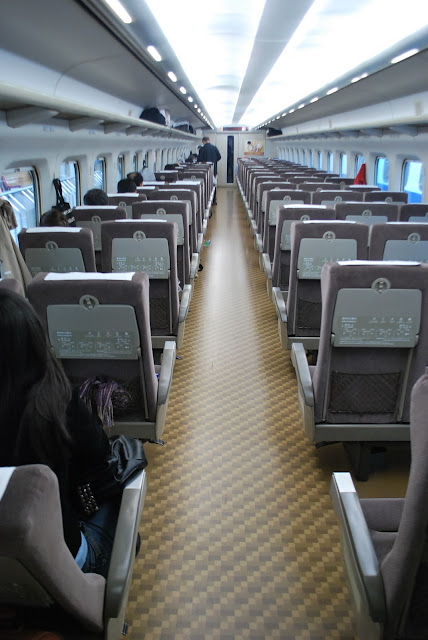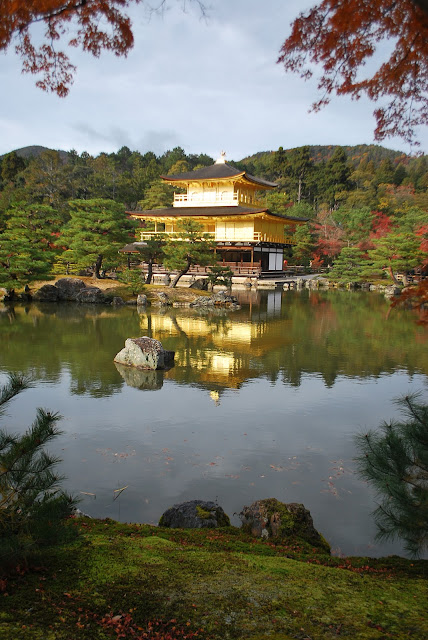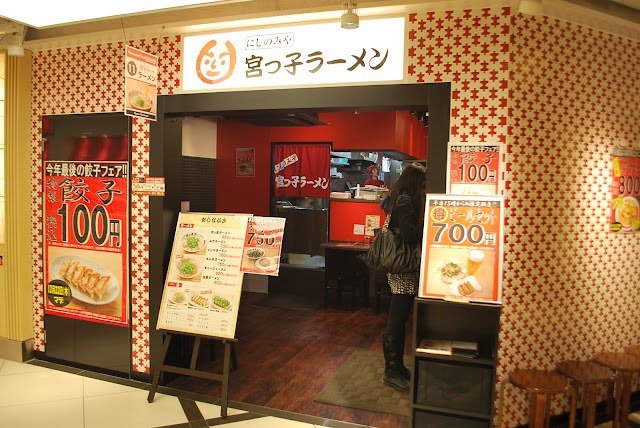From Kyoto, we traveled 1 hour by rapid train (kaisoku) to Nara for a half day tour. We got on a bus to get to the popular attractions in the city.
We strolled a bit...
and stumbled upon Kofukuji Temple. The 50 meter, five story pagoda found at Kokufuji Temple is said to be the second tallest pagoda in Japan.
The desire to have a deer encounter however was what made us visit Nara.
Nara Park is home to hundreds of freely roaming deer so we knew we were in the right place for some deer hunting. The deer at Nara Park are symbols of the city and are considered to be natural treasures.
This was the very first deer I saw.
We explored the huge Nara Park
and got to see the deer doing different activities.
 |
| Feeding |
 |
| Socializing |
 |
| Chillin' |
For a full deer experience, one can opt to feed the deer with cookies.
Just be careful though because the deer are not as harmless and tame as they appear to be.
The deer were able to sense instantly that we had cookies and would not leave our side until we feed them everything we got. From experience, males were more aggressive with one even bumping me from behind, almost knocking me down. Dandy!
Nara Park is also the location of Todaiji Temple, one of the most historically important temples of Japan. Todaiji was constructed in 752 and was the head temple of all provincial Buddhist temples.
Todaiji Temple is also the world's largest wooden building...
and houses Japan's biggest bronze Buddha, making Todaiji one of the most famous temples in all of Japan.
From the laidback atmosphere of Nara, we returned to Kyoto to take the shinkansen and head to the final destination of this trip, Tokyo!
This is how an ordinary cart looks like. Much smaller than the green carts but comfortable still.
We found seats near the rear of the cart so that space behind our seats was big enough to store our luggage.
After 3 hours of traveling, we got off at Japan's busiest train station, Shinjuku. For a moment, I got overwhelmed by the number of people transiting and questioned how we were going to maneuver our way through unfamiliar territory with overstuffed luggage in tow.
We somehow did and reached our hotel in Tokyo, none the worse.
Hotel Sunroute Plaza Shinjuku hosted our final five nights in Japan. I chose this hotel for its convenient location and large room by Tokyo standards.
From our hotel in Shinjuku, there was no time to rest and we immediately went to Shibuya. Shibuya is a popular entertainment and shopping area, considered to be one of the busiest districts in Japan.
At Shibuya train station, it's best to use the Hachiko entrance to easily locate the Hachiko Statue.
For those who are not familiar, Hachiko is a most loyal dog who waited for many years, in front of the Shibuya station, for his master who has already passed away. The Hachiko Statue is a famous meeting spot for friends and lovers.
A closeup look shows how rough the statue is. Hachiko doesn't even have eyes. :(
Near the Hachiko Statue lies Shibuya's most famous landmark, the Shibuya crossing. There are three large TV screens that overlook the crossing, as well as many advertising signs.
For a Friday night however, I expected more people to be in Shibuya. I wonder where the people have gone as crossing Shibuya was not the mad, frantic scramble I expected it to be.
The streets of Shibuya were also not that crowded:
In between exploring Shibuya, we did find time to have a snack.
We got curious because of the relatively long lines but the fried chicken nuggets were just so-so.
Space was tight
and food was nothing to write home about.
 |
| Plain Gyudon with Egg |
 |
| Hamburger Curry with Cheese |
I have to say that Shibuya didn't live up to its hype as a lively crowded district bursting with energy. I guess it's not possible for now, with the tsunami disaster still fresh in the minds of the Japanese.


























































































